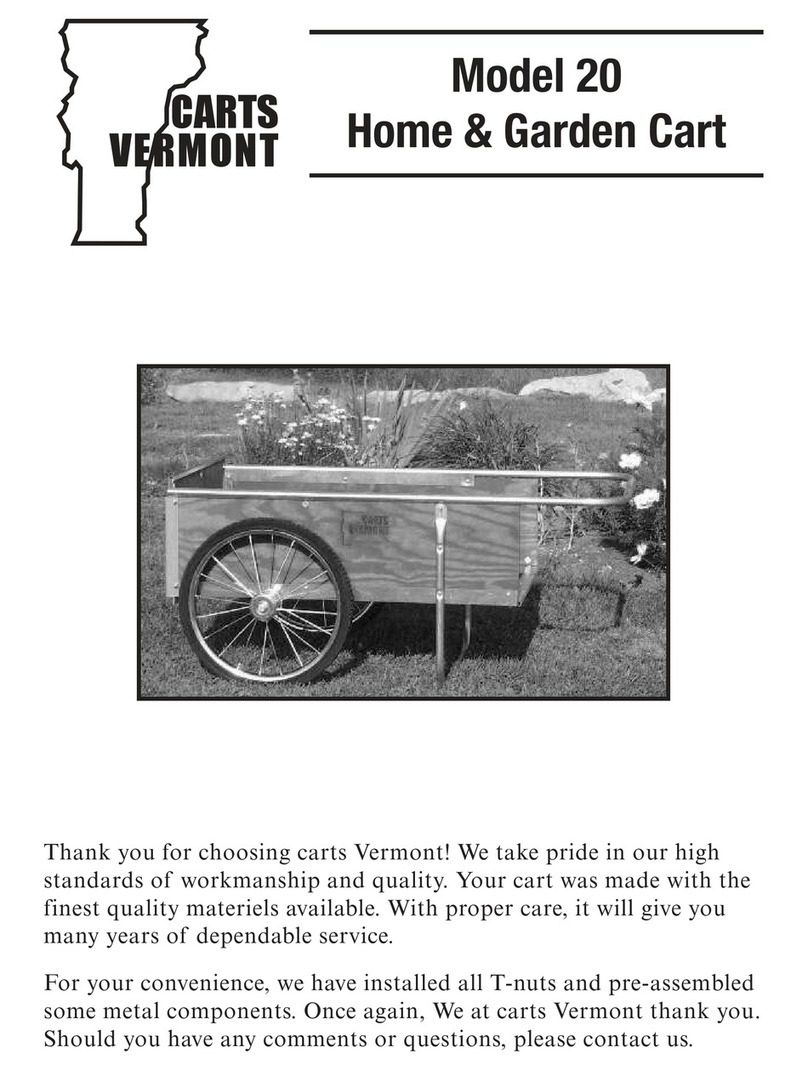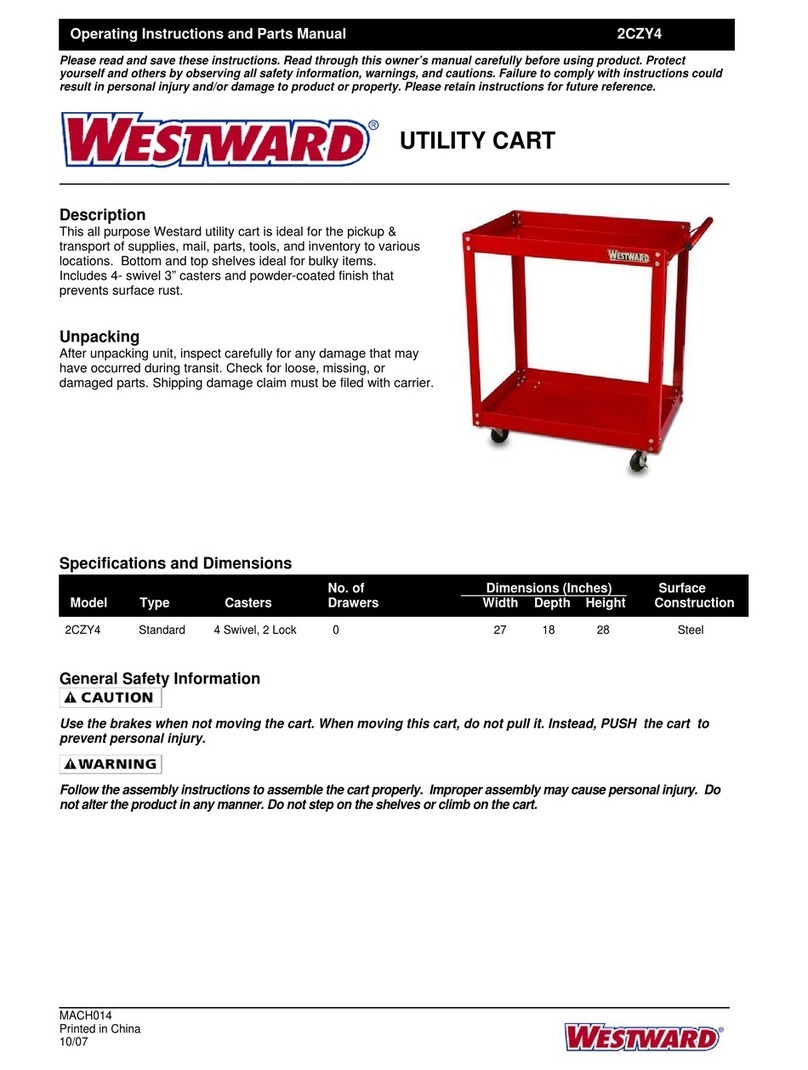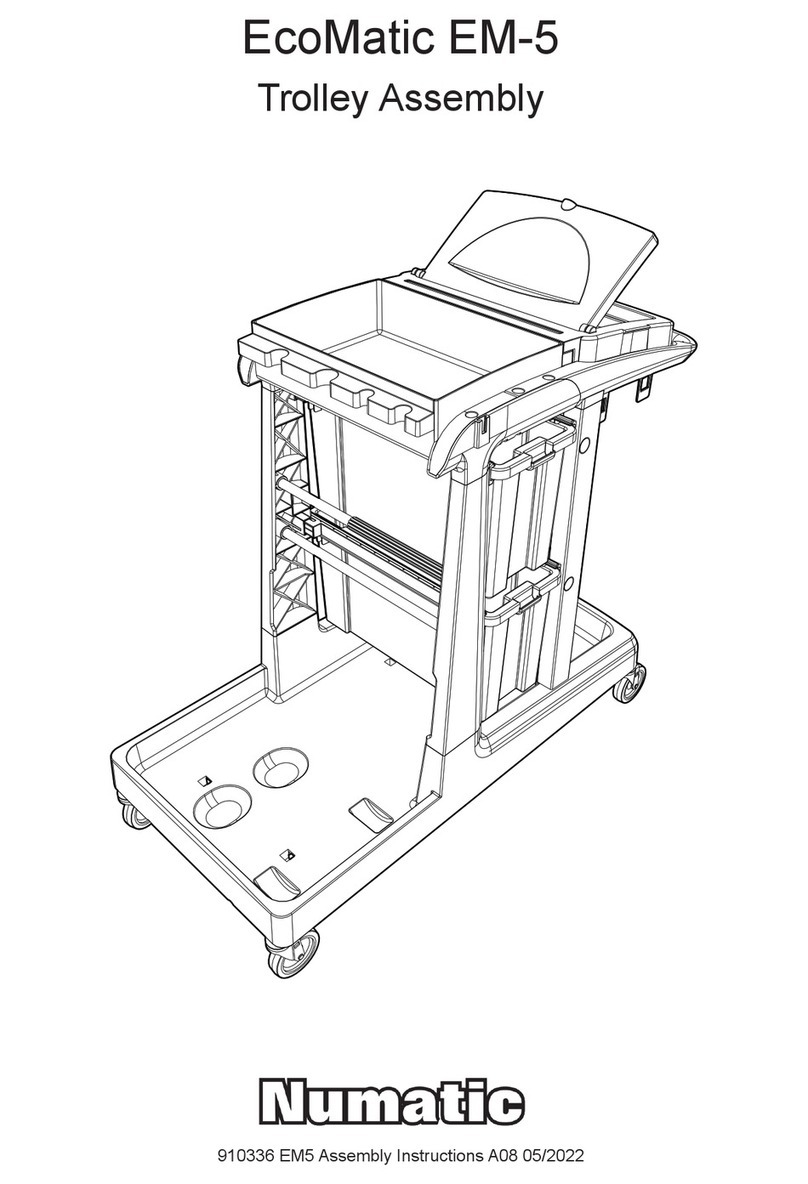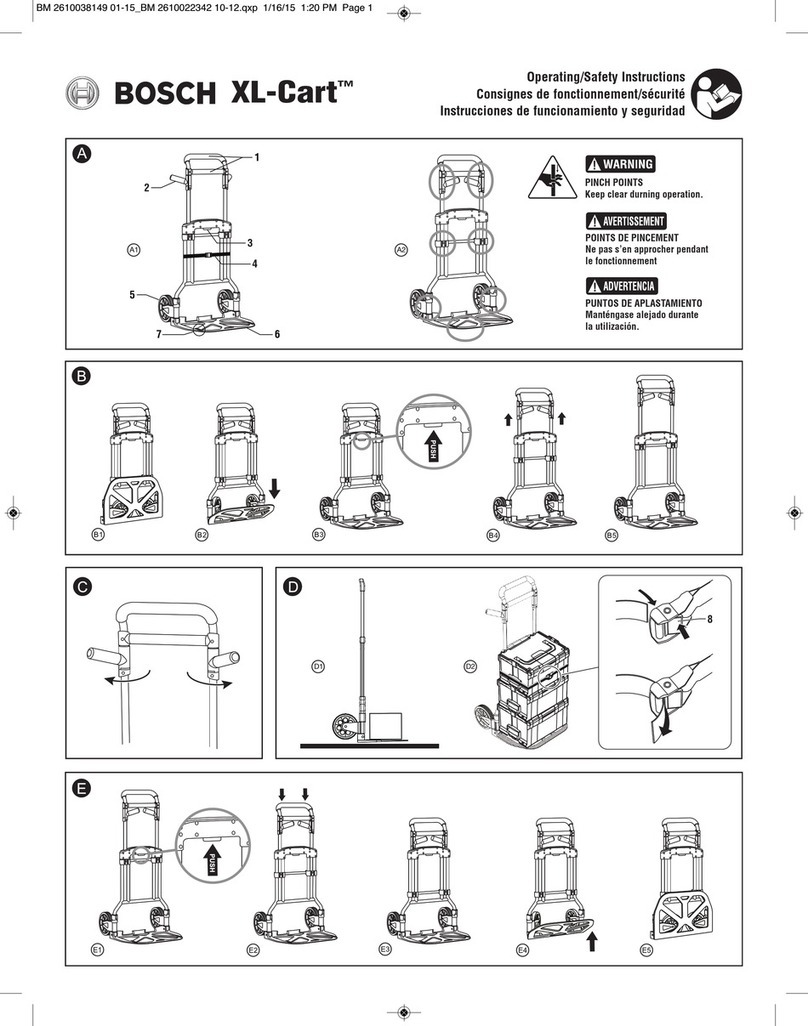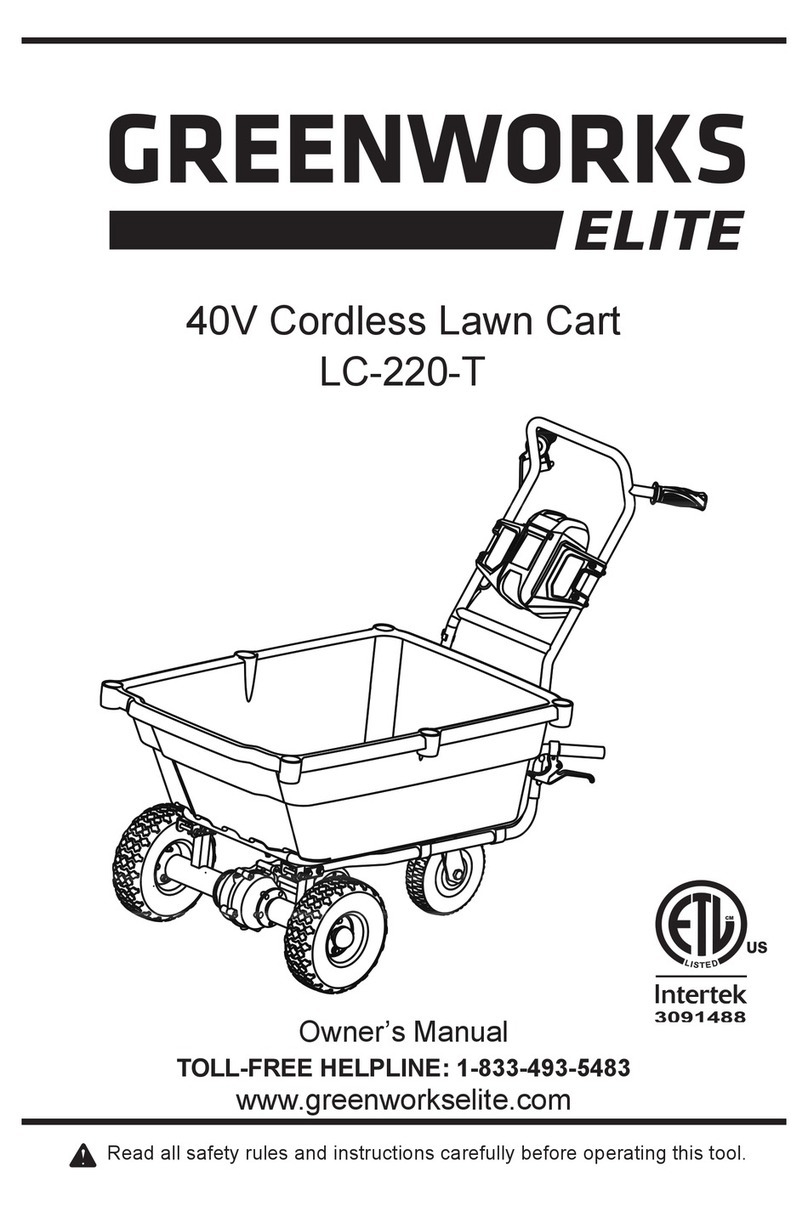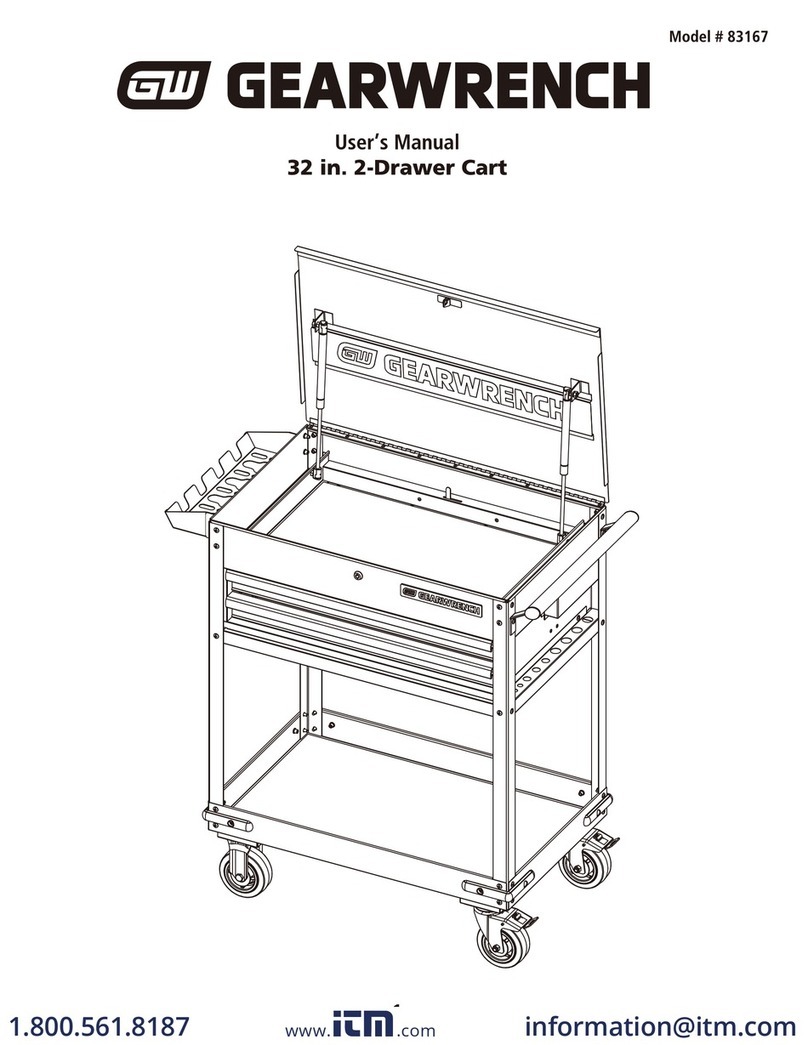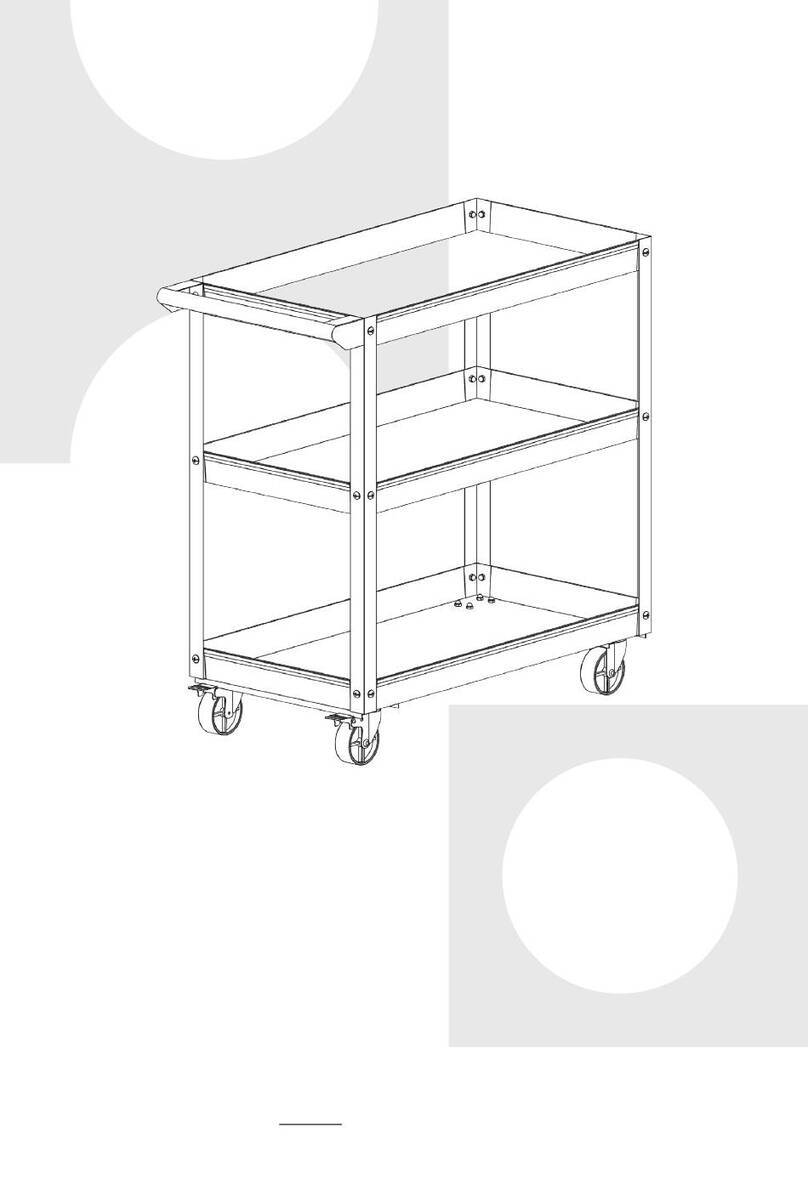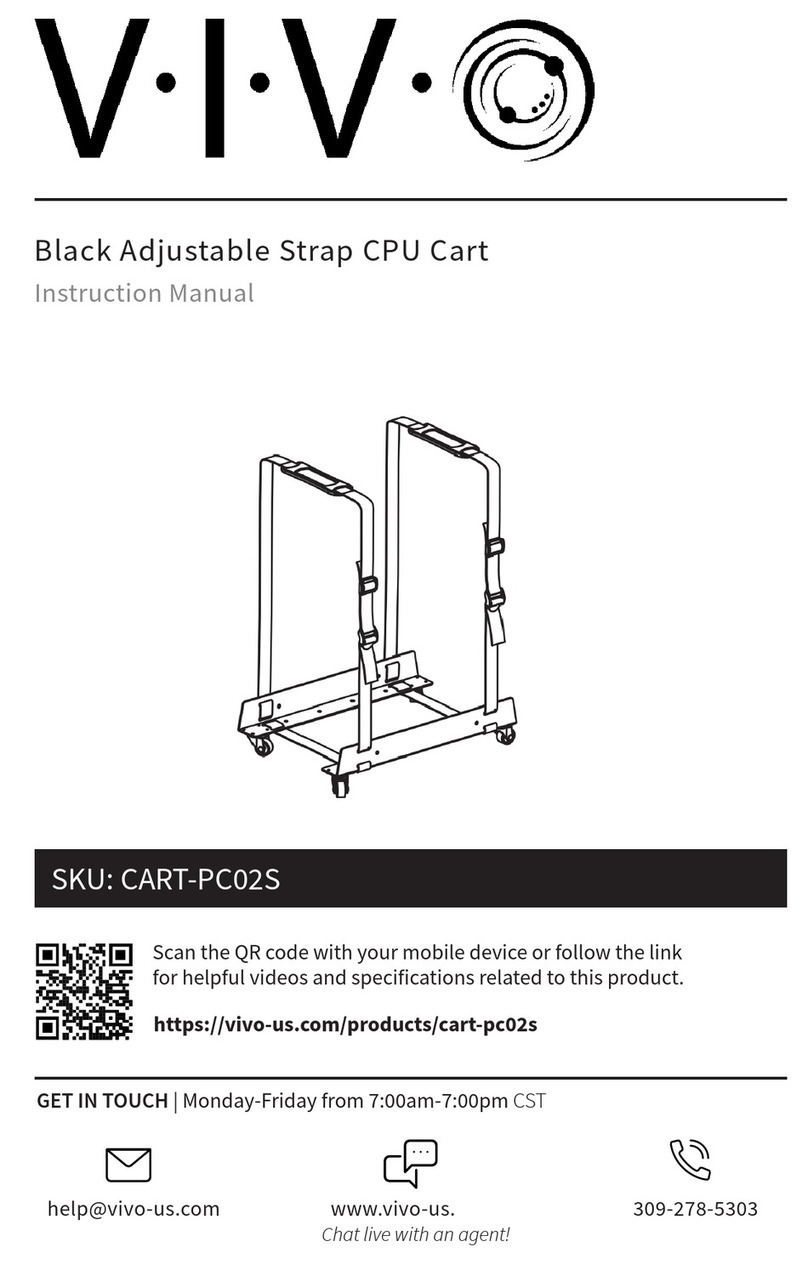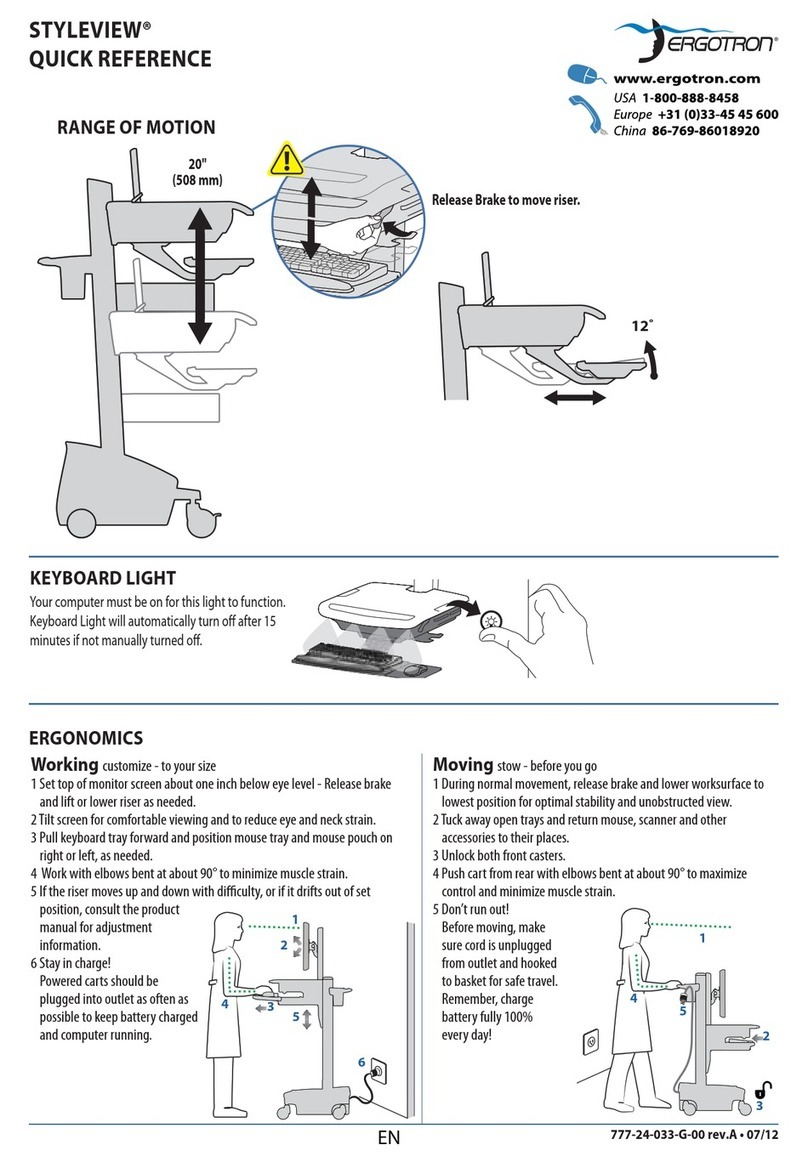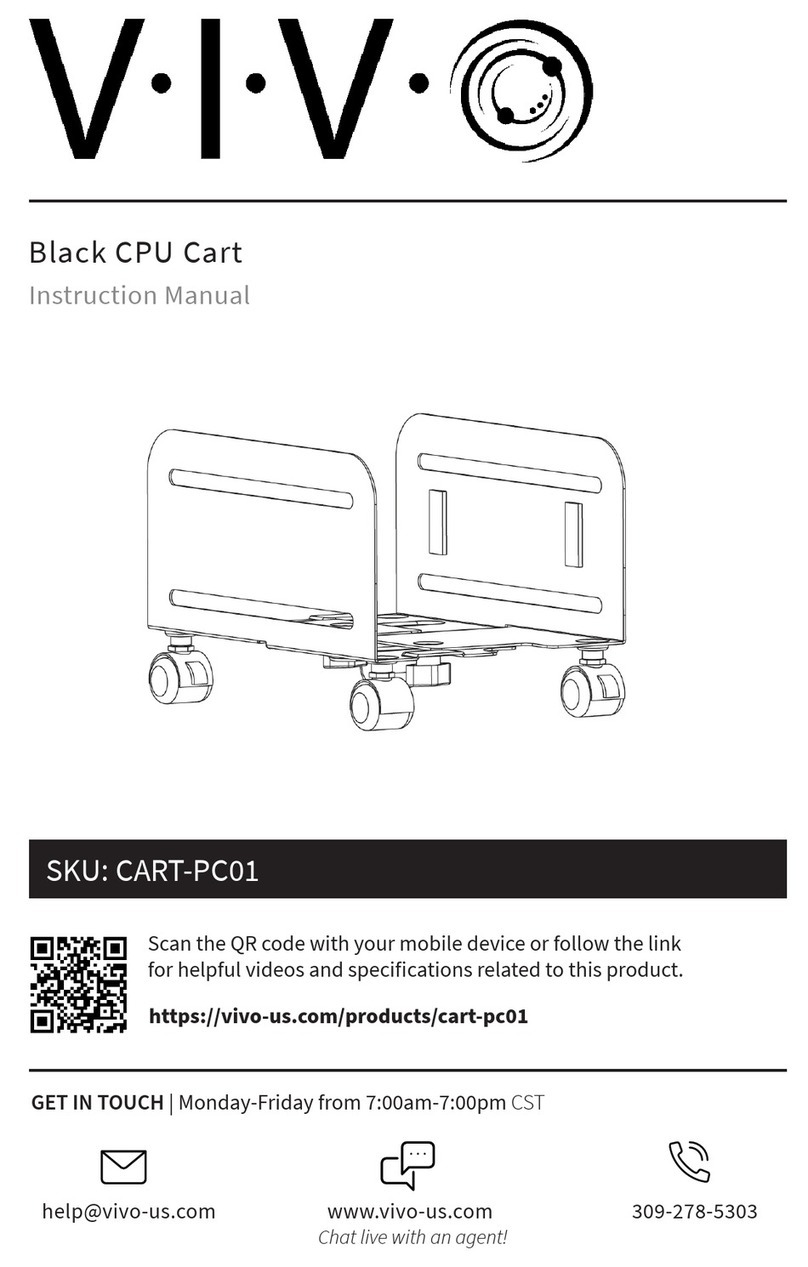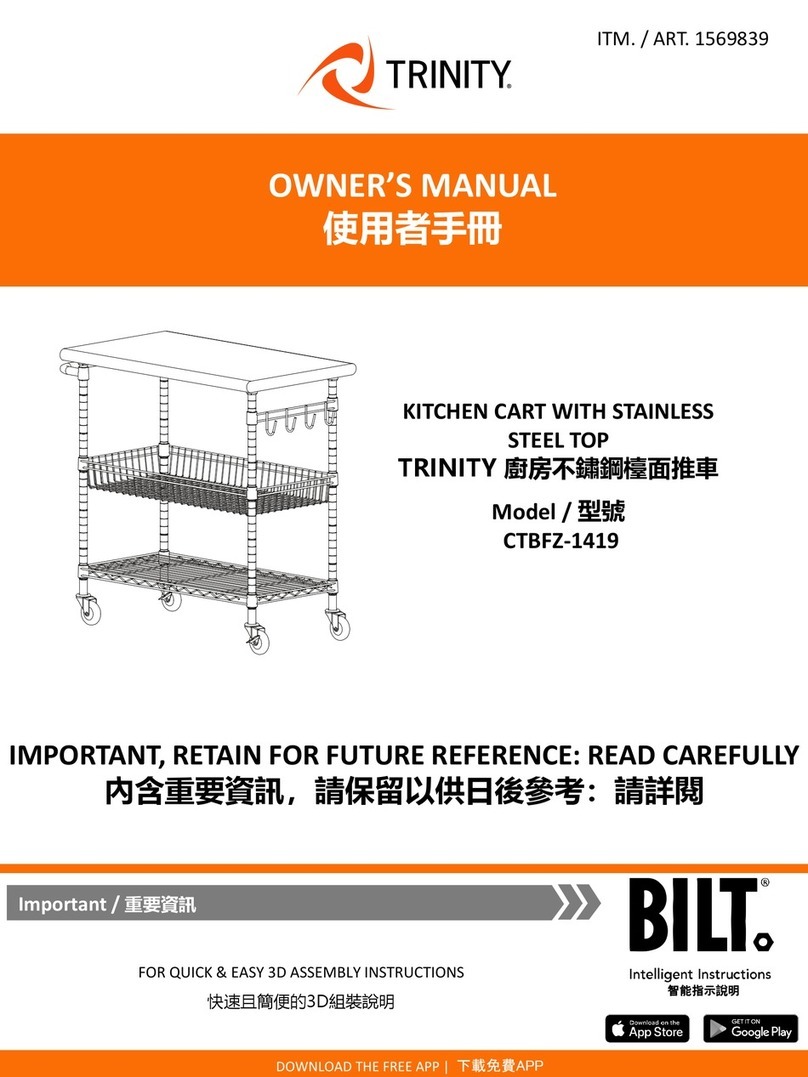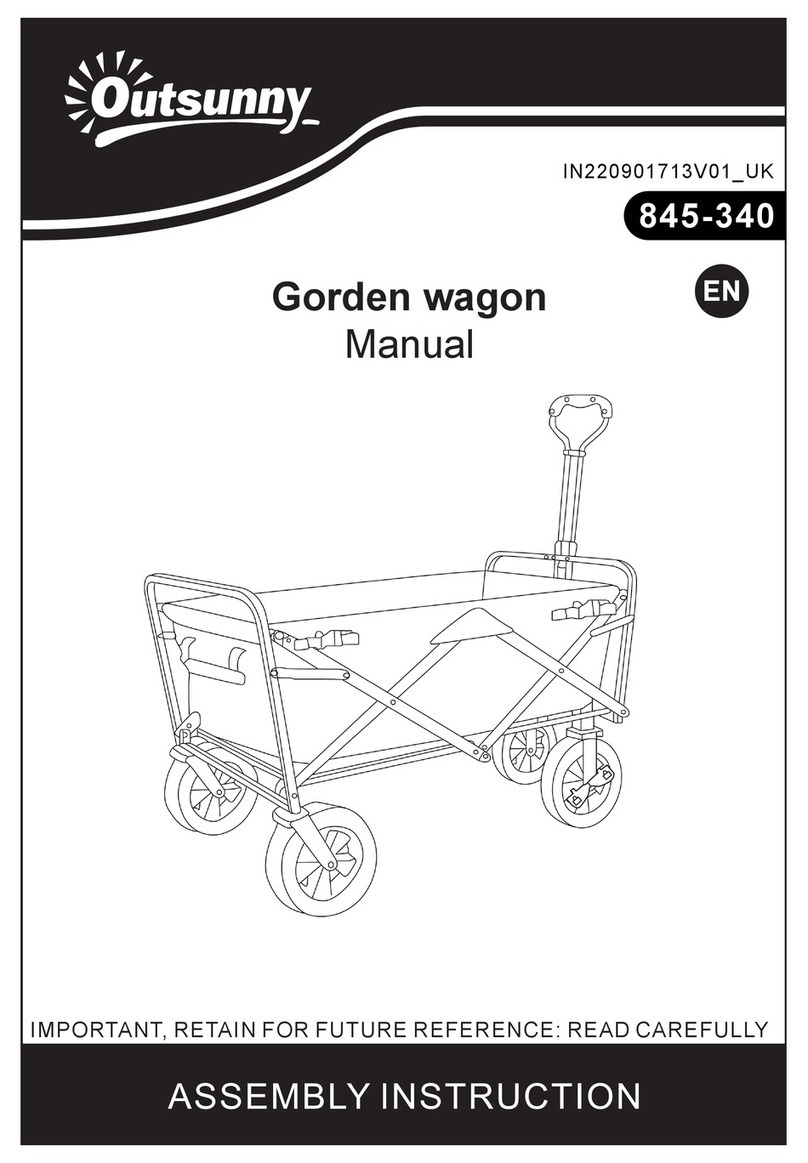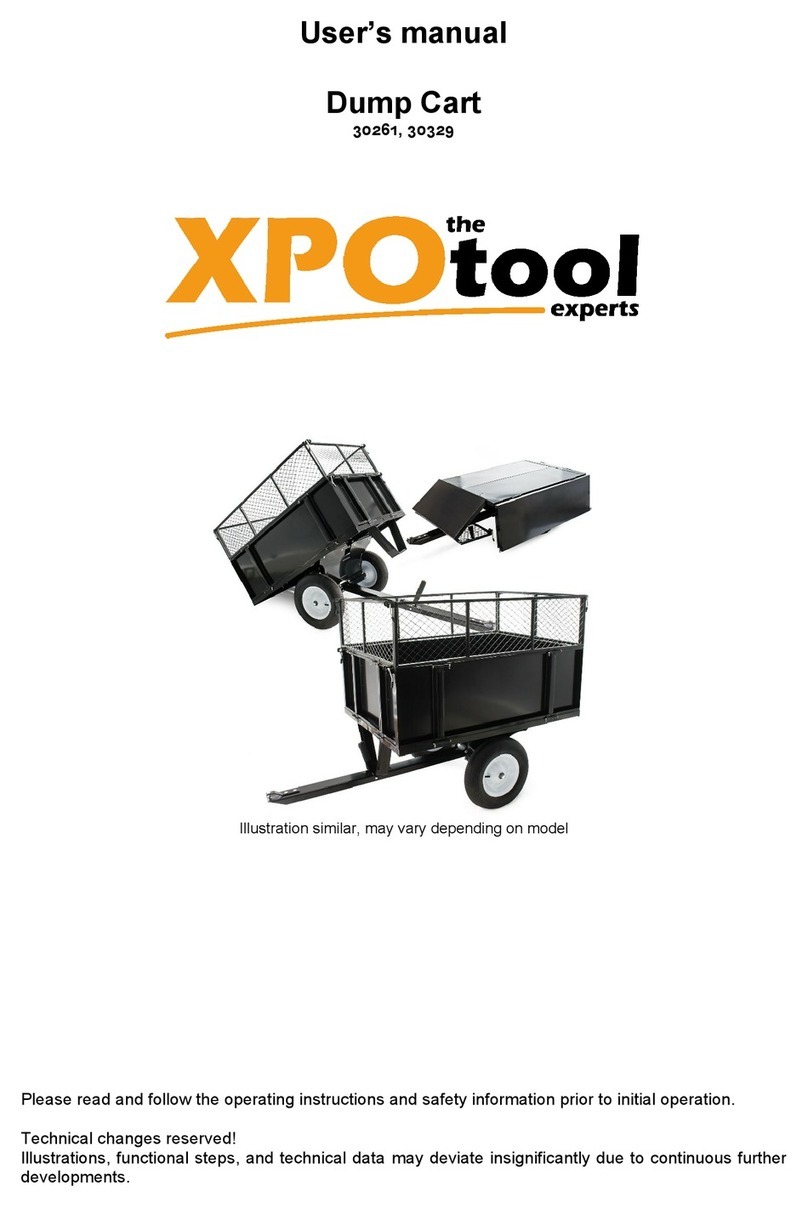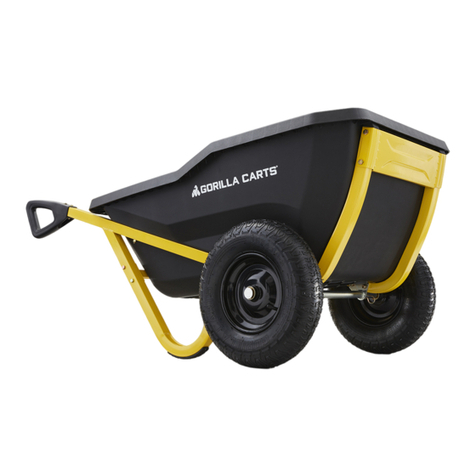
the job better and safer at the rate for which it was
designed.
•Do not use the power tool if the switch does not turn it
on and off. Any power tool that cannot be controlled with
the switch is dangerous and must be repaired.
•Disconnect the plug from the power source and/or
remove the BATTERY pack, if detachable, from the
power tool before making any adjustments, changing
accessories, or storing power tools . Such preventive
safety measures reduce the risk of starting the power tool
accidentally.
•Store idle power tools out of the reach of children and
do not allow persons unfamiliar with the power tool or
these instructions to operate the power tool. Power
tools are dangerous in the hands of untrained users.
•Maintain power tools and accessories. Check for
misalignment or binding of moving parts, breakage of
parts and any other condition that may affect the
power tool's operation. If damaged, have the power
tool repaired before use. Many accidents are caused by
poorly maintained power tools.
•Keep cutting tools sharp and clean. Properly
maintained cutting tools with sharp cutting edges are less
likely to bind and are easier to control.
•Use the power tool, accessories and tool bits etc. in
accordance with these instructions, taking into
account the working conditions and the work to be
performed. Use of the power tool for operations different
from those intended could result in a hazardous situation.
•Keep handles and grasping surfaces dry, clean and
free from oil and grease. Slippery handles and grasping
surfaces do not allow for safe handling and control of the
tool in unexpected situations.
2.5 SERVICE
•Have your power tool serviced by a qualified repair
person using only identical replacement parts. This
will ensure that the safety of the power tool is maintained.
•Never service damaged battery packs, Service of
battery packs should only be performed by the
manufacturer or authorized service providers.
3 GARDEN CART SAFETY
WARNINGS
• Do not put your hands or feet near or under the rotating
wheels.
• Never operate the machine in the rain or in tall wet grass.
Remember, this is an electric machine.
• Do not turn on slopes unless necessary, and then, turn
slowly and gradually.
• Do not use on slopes over 16.7 degrees.
• Park on level surfaces for stability when loading or
unloading.
• Do not pull the machine backwards while running in
forward gear. This can damage the motor and ruin the
gears.
• Prevent damage to the motor and gears – do not tow
anything behind the machine or overload it.
• Evenly disperse the load in the machine bucket.
• Weight limit: 220 lbs. (100 kg) on level cement surfaces
— overloading may cause injury and could permanently
damage unit.
• Only load with as much weight as you can control when
machine is moving.
• Never carry passengers.
• Do not use if forward/backward button or power switch
or lock-out button is not working properly.
• Do not move near drop-offs, ditches, or embankments.
The machine could suddenly turnover if a wheel is over
the edge of a cliff or ditch or if an edge caves in.
4 BATTERY SAFETY WARNINGS
• Use equipment only with specifically designated battery
packs. Use of any other battery packs may create a risk of
injury and fire.
• Recharge only with the charger specified by the
manufacturer. A charger that is suitable for one type of
battery pack may create a risk of fire when used with
another battery pack.
• Do not charge appliance in rain, or in wet locations.
• Remove or disconnect battery before servicing, cleaning.
• Do not open or mutilate the battery(ies). Released
electrolyte is corrosive and may cause damage to the eyes
or skin. It may be toxic if swallowed.
• Exercise care in handling batteries in order not to short
the battery with conducting materials such as rings,
bracelets, and keys. The battery or conductor may
overheat and cause burns.
• Ensure the switch is in the off position before inserting
battery pack. Inserting the battery pack into power tools
that have the switch on invites accidents.
• When battery pack is not in use, keep it away from other
metal objects like paper clips, coins, keys, nails, screws,
or other small metal objects that can make a connection
from one terminal to another. Shorting the battery
terminals together may cause burns or fire.
• Under abusive conditions, liquid may be ejected from the
battery; avoid contact. If contact accidentally occurs,
flush with plenty of soap and water. If liquid contacts
eyes, immediately seek medical help. Liquid ejected from
the battery may cause irritation or burns.
• Do not expose a battery pack or tool to fire or excessive
temperature.
• Do not dispose of the battery(ies) in a fire. The cell may
explode. Check with local codes for possible special
disposal instructions.
• Follow all charging instructions and do not charge the
battery pack or tool outside the temperature range
specified in the instructions.
3
English EN
